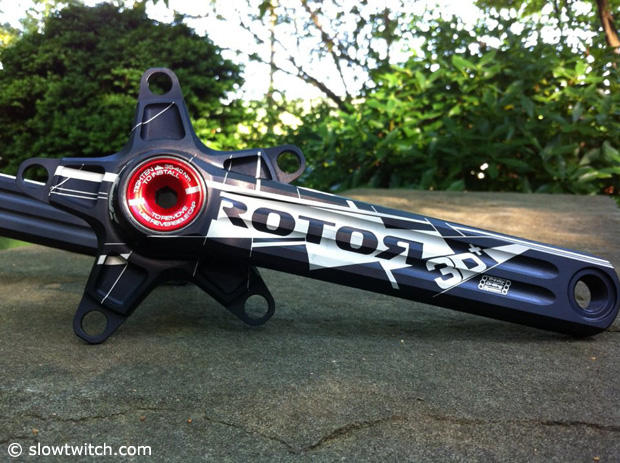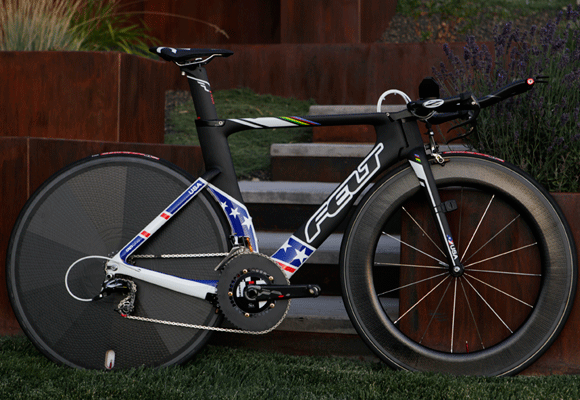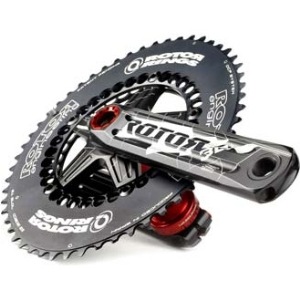Rotor long term test
For experienced cyclists, the concept of a non-round or otherwise odd-shaped chainring is nothing new. They have existed in various forms for many years, typically accompanied by a claim of improved performance or efficiency. Even the Japanese Giant, Shimano, dabbled in this with their now-defunct Biopace product.
While these have come and gone, it appears as though a relative newcomer might be here to stay. I’m writing, of course, about Rotor Bike Components. Their popularity continues to climb, with a slew of pro and amateur athletes riding their products. Until last year, I firmly in the camp of, ‘It probably doesn’t do anything, but who knows?’ I had never used the product, and wasn’t going to go out of my way to try it. In general, I didn’t think much about it at all.
Early last year, I met with the US distributor for Rotor, Rotor Bike USA. Located in Colorado Springs, they were just down the street from me. Kervin Quinones (say ‘keen-yo-ness’) runs the show, and I came to find him as a very friendly and very busy guy. I originally got in touch not because of the Q-Rings’ shape, but rather the size; Rotor is one of the few companies left to offer a chainring larger than 55 teeth. I was building up a 650c project bike, and wanted something that would be close to matching my 53-tooth gearing on 700c wheels. A pair of 56/42 Q-Rings ended up on the bike.
Through the course of that project, I learned quite a bit about Q-rings and had the opportunity to use several different Rotor products, including their new QXL ring. This is our long-term report.
The Concept
Much has been written about Q-Rings in the past, so I won’t beat this to death. I also have no way to personally substantiate their claims of improved power output or reduced muscle lactate in any meaningful way (e.g. a study of one person isn’t going to tell us very much), so I’m not going to argue for or against them. What I will offer are my personal experiences and opinions.
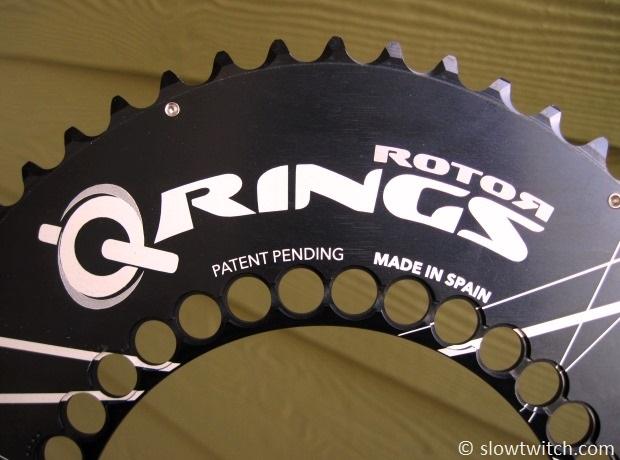
Unlike other non-round rings (e.g. Shimano Biopace or Osymetric), Rotor rings feature a symmetrical oval shape. The idea is very simple: To cause the rider to spend less time in the least powerful parts of the pedal stroke, and more time in the most powerful parts of the pedal stroke. The orientation of the ring is rotated roughly 90 degrees relative to what Shimano Biopace had, so the two products are effectively opposite.
Rotor’s claims are clear: This increases rider power, reduces heart rate, reduces oxygen consumption, and makes you – duh – faster.
For a simple look at the execution of the shape, this photo shows my round 56-tooth Q-Ring laid on top of a round garden stone:
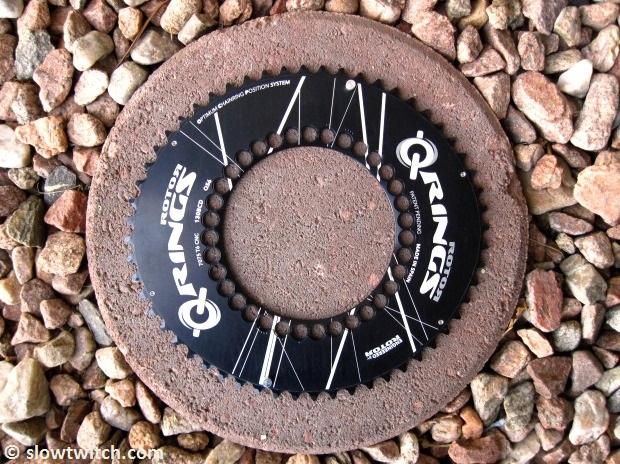
For the full story on the science, you can look at Rotor’s website and this study:
http://www.rotorbikeusa.com/images/science/pdf/SSCIvol06no01paper04.pdf
The paper was published in the International Journal of Sports Science and Engineering, with Christie O’Hara as the first author. Incidentally, O’Hara went to work for Rotor after the paper was published, and she now works as their Research Specialist, doing continued work to validate the product. I met with O’Hara for an afternoon, and she was very clear with me that her current job is indeed a conflict-of-interest in terms of producing new data (e.g. we can all see the potential for bias), but she maintains that she is a researcher at heart. Additionally, I was told that there is hardly any money funding independent studies on the product, so they must fund their own.
If you’re interested in Q-Rings, I highly suggest that you read the paper to draw your own conclusions. Rotor is certainly able to make some claims based on that study, but I personally found some things to be limiting. As general consumers, we should always be ready to read between the lines with any claims that are based on research. For example, this graphic shows heart rates for six time trials:
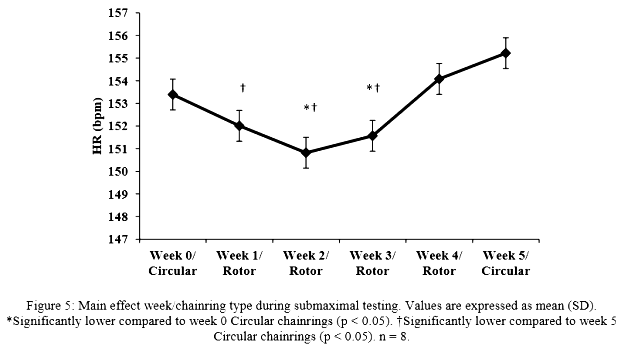
Weeks one, two, and three show significant drops in heart rate compared to the round rings in week zero and five. What about week four? That trial used Rotor rings and did not show an improvement. Can Rotor claim lower heart rate based only on the weeks that showed improvement? Did they adequately control for things like training effect and participants’ recovery? Was the single practice run enough to negate any learning effect throughout the study?
Personally, I wanted to understand the data, but not be paralyzed by it. The study left me interested, but not necessarily thinking that the product was good or bad.
Chainring Position
One key feature that differentiates Rotor rings from Osymetric and Biopace is the ability to adjust the position of the chainring. They call it Optimum Chainring Position, or OCP for short. Most of their chainrings offer five positions via a lot of bolt holes.
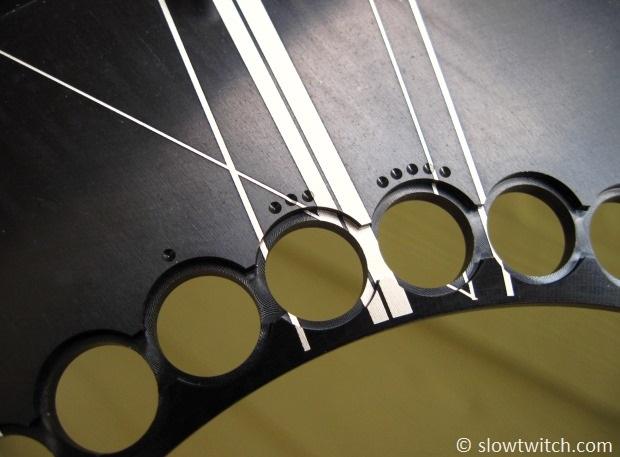
Positions one, three, and five are on one side of the ring, with two and four on the other side. The chainrings come with instructions that show you how to set these up. It is worth noting that all of their cranks ship without chainrings installed (at least in the US), because most users will want to customize their OCP position.
The small OCP dots face outward (towards the right of the bicycle) for the big chainring, and inward (towards the left of the bicycle) for the inner chainring.
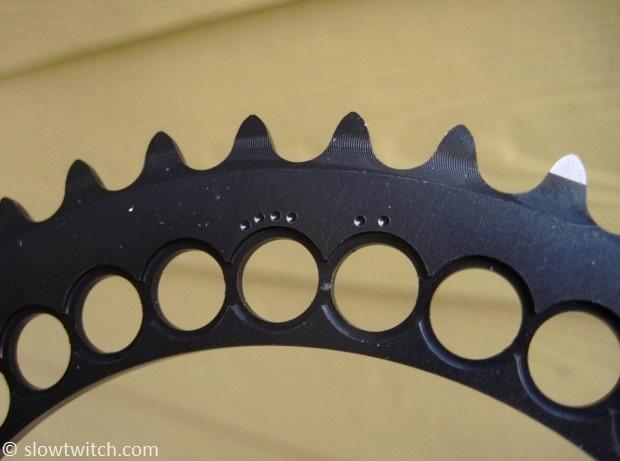
Why would you want to change the position of the ring? What does it do? In effect, rotating the ring changes where the hardest part of the pedal stroke happens. If it feels like each pedal circle is too difficult too soon, use a higher number. If it feels like the hardest part happens too late, use a lower number. In general Rotor recommends using position 3 for slack seat tube angle bikes (road, cyclocross, etc), and position 4 for steep seat tube bikes (e.g. triathlon and time trial). After playing around with my chainrings for a while, this is exactly how I ended up. Rotor also now offers a Micro Adjust Spider (MAS) that allows for smaller changes (2.5 degrees vs the standard 5 degrees).
For those that are unsure, Rotor has several resources on their website to help you decide on a number.
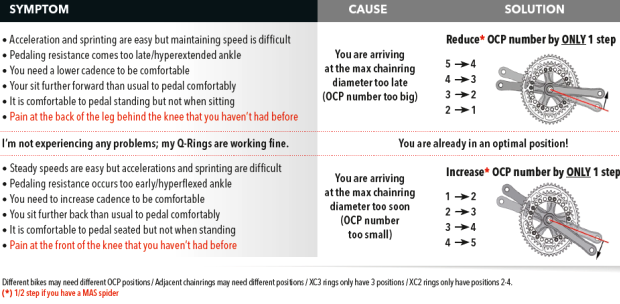
Must you run both chainrings in the same OCP number? According to Rotor, you do not have to use the same position, but using drastically different numbers could result in poor shift performance. As an example, someone might want to use position #4 for their big chainring, where they’ll have a higher probability of riding on the nose of the saddle. They might use position #3 for the small chainring, due to the tendency to ride slower and/or further back on the saddle. I tried this, but personally preferred to have the same number; it just felt better to me.
Riding Impressions
With my 56/42 Q-Rings installed on the Slowtwitch Serotta 650c Project Bike, I was ready to roll. To be honest, the first ride didn’t seem all that remarkable. I stayed with my standard 165mm crank length; Rotor does not suggest that any crank length change is needed on account of the chainrings.
As I rode the rings more and more, I started to like them more and more. They just felt… smooth. Although they actually change your crank speed throughout the pedal stroke, it felt like I was pedaling better circles.
The best way I can put it is this – it feels like the chainrings force my legs over the top of the pedalstroke quicker; they’re giving a little ‘assist’. When I look at other sports such as swimming or speed skating, many coaches suggest that you think about accelerating through the stroke. When our bodies are in the position which allows the best production of power, we push harder – and produce more power. It feels as though the Rotor rings are offering a way to execute this mechanically. You push down through the meat of the pedal stroke slower, and accelerate as you reach the end of it.
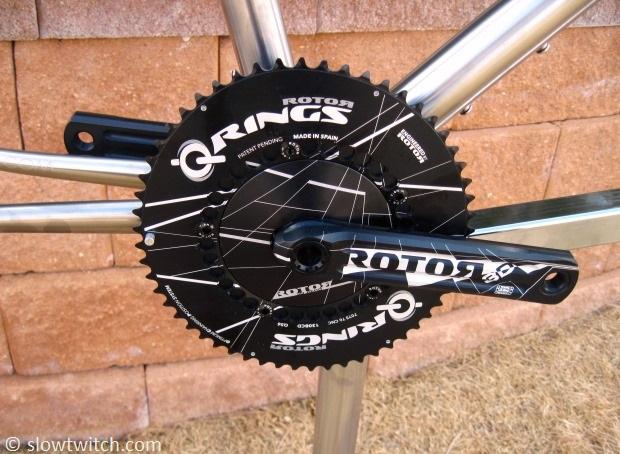
In my view, this product may be less ‘necessary’ for people that are more talented cyclists. Sometimes you see someone that was truly born to ride a bike, with a beautifully smooth pedal stroke. They appear to perfectly push down, pull up, and put out power evenly through the whole circle. Some people can run and catch a ball or Frisbee better than others. Some athletes can truly ‘commit’ to every movement as it happens. I don’t consider myself one of those born-to-cycle people, and these rings make me feel one notch better.
Was it all placebo? Can I really know? No, I can’t. In the end, I don’t really care, either. Regardless of whether they actually make me faster or not, I’m confident that they’re not hurting me, and they just feel better. I like riding my bike more with them. I can still ride a bike without them, but the funny thing is – that’s when I notice it more. Going back to round rings reminds me why I like my Rotor rings. Rotor has claims about improving Computrainer spin scan numbers, but I don’t own a Computrainer to perform a test.
New QXL Rings
While I was testing my standard Q-Rings last year, Rotor came out with a new product, called QXL. In simple terms, this QXL is ‘more oval’ than the standard Q-Ring. The photo below shows a 50-tooth Q-Ring (left) compared to a 53-tooth QXL for Dura Ace 9000 cranks (right):
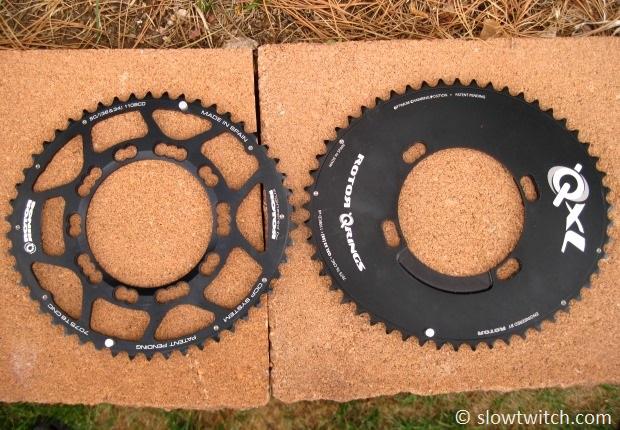
According to O’Hara,
“’Ovality’ of a chainring is the major axis vs. the minor axis (round is 1.0, Q-Ring 1.10, QXL 1.16). Also, I think more important than the ovality numbers are the actual diameter in terms of tooth count: Q-Ring is a standard 53T chainring with a 10% ovality producing a maximum diameter comparable to 56T chainring, and a minimum diameter comparable to a 51T chainring. QXL is a standard 53T chainring [with a] 16% ovality, permitting a maximum diameter equal to a 57T chainring, and minimum diameter equal to a 49T chainring. Obviously a round ring is the same diameter all the way around.”
While Rotor didn’t come out and say it, I see this as a ‘Rotor 2.0’. I’ve heard the QXL compared to Osymetric, due to the more aggressive shape. The QXL, however, still retains the symmetrical oval style of the Q-Ring, vs Osymetric’s radical asymmetric shape.
This photo shows the 50t Q-Ring laid on top of the 53t QXL:
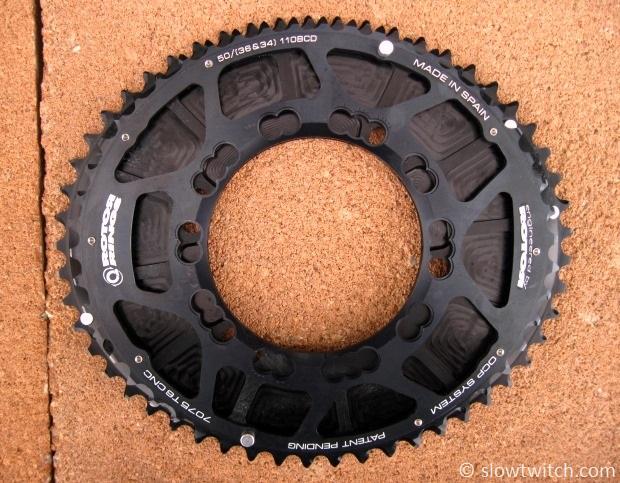
As you can see, the top-to-bottom height is almost identical. The QXL is noticeably longer, however:

I see a lot of people talk about those ‘effective’ tooth counts with Q-Rings, as though it may influence the ring size that they should buy. “A 53-tooth ring is like a 56 in the hardest part, and like a 50 in the easiest part”, and so on. While that is true, I don’t like to get hung up on it. The most important part is still the actual number of teeth. That is how many teeth the chain must physically wrap around, and that is the actual amount of chain that you’re going to push during one crank revolution. If you ride a 53-tooth round ring, I would put you on a 53-tooth Q-Ring or QXL.
Should you ride QXL or Q-Rings? How do you decide? I have spent over 6 months on both products, and for now… it’s hard to say. I really like them both. In a perfect world, we would all get our own custom-shape rings for our own body type, riding style, and level of experience. Given that Rotor now has two chainring shapes, five OCP positions, and the new micro-adjust spider, they’ve gotten as close to custom as we’re going to get. The good news is that, compared to most other aftermarket upgrades, these chainrings are fairly inexpensive, at about $250-300 per pair. I’d suggest starting with the standard Q-Ring, and if you like them, try the QXL next year or for a different bike.
Rotor also has their own chart to help you decide:

Tech Notes and Setup
For the full story on proper set up of Rotor rings, check out the article linked at the bottom of this page – Front Derailleur How-To. It includes specific instructions and notes for both Q-Rings and QXL. While I have heard criticism of Osymetric chainrings’ shift quality, I can report that the QXL is quite good considering its shape; almost as good as the standard Q-Ring.
I do suggest that you use the TT/Aero style rings whenever possible. Having tried a lot of different setups, cranks, derailleurs, etc – I do notice improved shift quality with the solid Q-Rings on average. With an Ultegra 6700 front derailleur (or better) and an Ultegra, Dura Ace, Rotor, or KMC chain, the shifting is as-good or better than most round chainrings. Of course, proper setup is key (as detailed in our front derailleur article). Rotor has several shims to help get your derailleur in the right place.
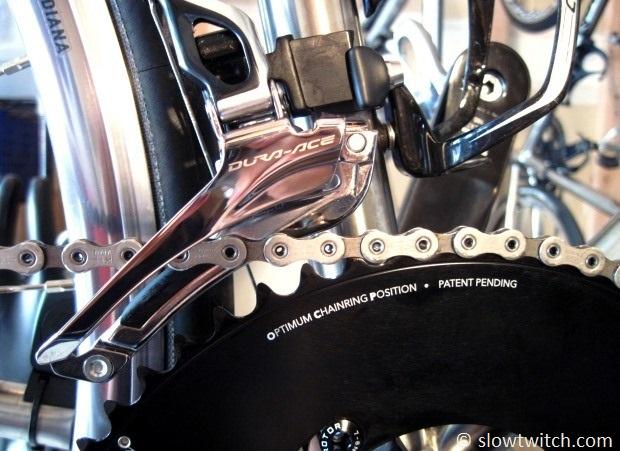
Ring Sizes
Rotor does very well in chainring sizes, offering a lot of choices. There are fewer options for the QXL, but I’m told that they will consider more options as demand dictates.
Beware that not all of their rings fit all cranks. Some manufacturers have slight differences in their crank design. For some of these cranks, Rotor makes a specific high-clearance version, which can ONLY be used in OCP 3.
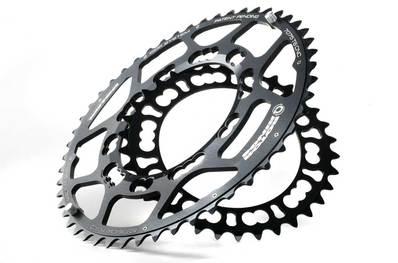
Most consumers will use Q-Rings for 110BCD compact cranks. They are offered in versatile combinations such as 53/38, 52/38, and 52/36. Consider the standard 130BCD crank for stronger time trialists, or folks using 650c wheels.
It is worth noting that the smaller your chainring choice, the less oval-shape it can be for a given bolt circle diameter. According to Rotor USA, the 34-tooth inner chainring for compact cranks is less oval than the 36-tooth version. It is constrained by the bolt circle. Likewise, a 39-tooth ring on a standard 130BCD crank is less oval than a 42-tooth ring. When in doubt, I suggest using compact cranks.
Rotor also offers some chainrings in a new 4-bolt 110mm version that is specific to Shimano’s latest cranks. Due to the bolt circle design, it only works with OCP positions 2, 3, and 4. Here is a 53/38 QXL set on a Dura Ace 9000 crank:
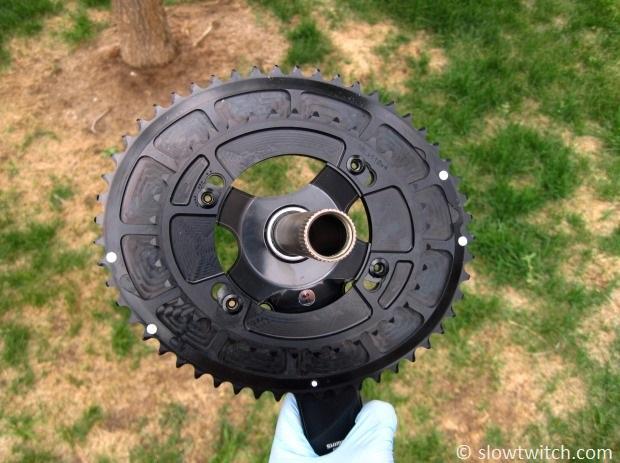
Crank Compatibility
Rotor, in my opinion, offers the best crank on the planet when it comes to compatibility and choice. I’m referring to their standard 24mm steel spindle crank, now called 3D24 (originally ‘3D’).
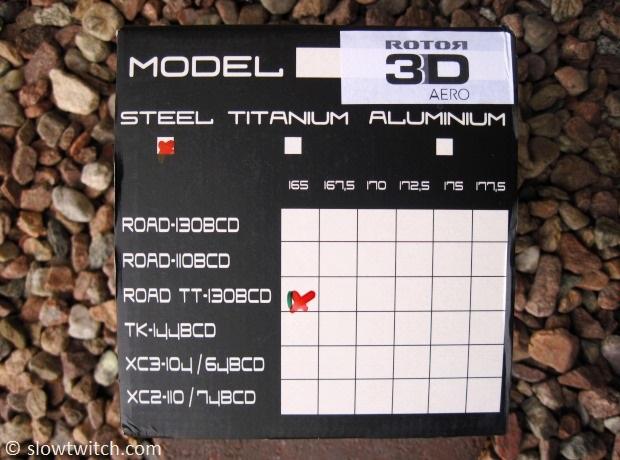
They have a ton of options in crank length (down to 150mm), and enough adapters to fit any frame and bottom bracket standard. 24mm spindles – to this day – are the clear winner when it comes to future and past-compatibility with all frame manufacturers’ proprietary designs.
Note that there is one tricky thing worth noting on Rotor cranks. Their bearing preload works very similar to Shimano, but the crank only uses one pinch bolt to hold that preload (vs two for Shimano). This reduces weight, but required an important design change. When you loosen the bolt, it actually spreads the crank. You CANNOT fully remove the bolt.
Put another way, its static position (e.g. the position in which it rests) is the clamped position. Shimano’s static position is the open position. If you put your Rotor crank in to storage while it is off the bike, you should thread the bolt back down so the crank isn’t left in this ‘stressed’ manner.
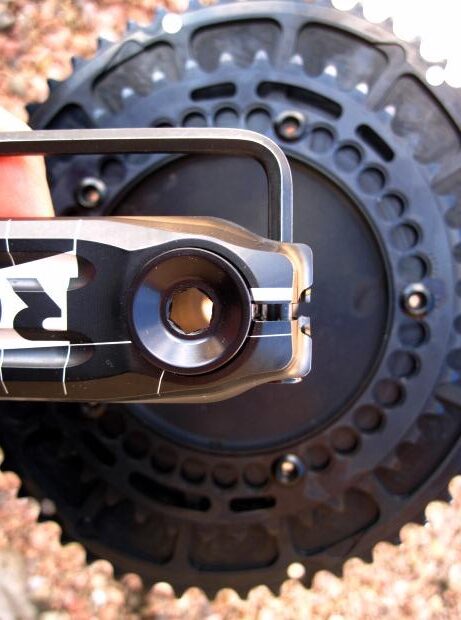
Power Measurement
As we’ve written before, all non-round rings introduce error into crank-based power measurement. In short, because they manipulate crank velocity during the pedal stroke, they fiddle with the way that power is calculated (which assumes a steady velocity). Depending on how ‘un-round’ your ring is, I’ve heard reports of power meters measuring anywhere from about one to four percent high. Power measurement from the rear hub (e.g. Powertap) does calculate anything based on crank velocity, so power numbers are not artificially inflated with Rotor rings.
Wrap Up
Chainring shape is an area of heated debate. Some passionately insist that they do nothing, while others swear by them. I find myself somewhere in the middle. I really do like them (and will continue to use them), but I could still live a happy life without them. If you're looking for something to help smooth out your pedal stroke, these could be your ticket. Some folks use them in-addition-to or in-lieu-of a shorter crank length, both of which are worth a shot.




